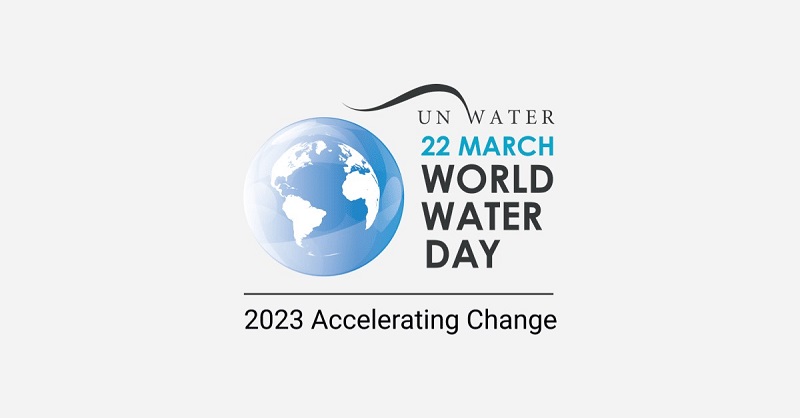
Kashmir as a region is today facing significant water challenges, including water scarcity, water pollution, and water-related conflicts. In this backdrop, the World Water Day dawned as another reminder of the region’s growing crises.
Celebrated every year on March 22nd, the World Water Day is an international event to raise awareness about the importance of freshwater resources and promote the sustainable management of water resources. The day highlights the value of water in all its forms and calls for collective action to protect and conserve water resources.
The day was first observed in 1993, and since then, it has become an international event that draws attention to the critical role of water and the need to protect this precious resource. The day is also a chance to celebrate the progress made in improving water access, sanitation, and hygiene, and to encourage continued efforts to achieve universal access to safe and clean water.
Governments, non-governmental organizations, and individuals around the world mark World Water Day by organizing events, conferences, and educational activities to raise awareness about the importance of water. The day provides a platform for stakeholders to share ideas, experiences, and best practices in water management and to collaborate in addressing water-related challenges. The day serves as an important reminder of the value of water resources and the need for collective action to protect and conserve them.
The theme of this year’s World Water Day was Accelerating Change, in order to address the water and sanitation issues. However, Jammu and Kashmir fails on this front, as the region is heading for a disaster on both accounts – untreated sewage and liquid waste constantly infecting the drinking water sources. Plus, unabated riverbed mining is impacting the region’s irrigation channels as water level is receding in rivers and streams.
Kashmir Problem
The water in Kashmir primarily comes from the Indus River and its tributaries, which flow through the region. The Indus River is one of the longest rivers in Asia and is an essential source of water for the people of Kashmir. The river originates in Tibet and flows through the northern part of India, including the Kashmir region, before emptying into the Arabian Sea. The water from the Indus River and its tributaries is also used for irrigation, generating hydroelectric power, and supporting the region’s biodiversity.
But despite the region known for its rich water resources, Kashmir still faces significant water challenges that impact its environment, economy, and social well-being.
Water scarcity is one of the significant water problems in Kashmir, and efforts are made to promote sustainable water use and conservation. The government of Jammu and Kashmir has launched several initiatives to address water scarcity, including rainwater harvesting, construction of check dams, and promotion of efficient irrigation systems. But the persistent nature of the problem only defies the concerted efforts.
Water pollution is another significant water problem in Kashmir, which is being tackled by the Water (Prevention and Control of Pollution) Act, 1974, that regulates and controls water pollution in the region. The act aims to establish standards for the quality of water, and enforce penalties for violators. But despite this Act, the water quality continues to record a steeping fall in the region.
Climate change is also a significant water challenge in Kashmir prompting several initiatives, like promoting climate adaptation, including the implementation of sustainable land use practices, afforestation, and the development of climate-resilient water infrastructure.
Water-related conflicts are also a significant water challenge in Kashmir, and efforts are made to promote dialogue and cooperation to resolve conflicts over water resources. The governments of India and Pakistan have engaged in several rounds of talks to address water-sharing issues in the region. Additionally, local communities are involved in decision-making processes related to water management to promote cooperation and sustainable management of water resources.
Water and Sanitation
Under a global pact inked by some significant signatories, a commitment has been made to ensure access to water and sanitation for all by 2030. It is no wonder that access to safe water, sanitation and hygiene is the most basic need for the health and well-being of humans. Even then, there are billions of people across the world who don’t have access to safe drinking water. Additionally, as population growth continues, the demand for water is also increasing day by day. Coupled up with urbanization and increasing demand for water for agriculture, industry and energy sectors, a severe water crisis has been triggered globally. This is a big challenge.
Water stress is a real crisis, exacerbated by poor water management, over extraction of groundwater, and contamination of fresh water resources. This challenge is not restricted to regions with limited access to fresh water but presents itself equally for areas which have plenty of water availability owing to Himalayan Glaciers. Such regions face the risk of being over explored, overused and urbanised.
It is no surprise then that many developing nations are facing challenges that are linked to degraded water ecosystems, water scarcity which is mostly caused by climate change, improper investment in water and sanitation.
This is a challenge in Kashmir as well where we have huge fresh water sources like high altitude glaciers. One in four people across the world i.e. 2.2 billion people don’t have access to safe drinking water. 4.2 billion people in the world don’t have better sanitation facilities and 3 billion people lack even basic facilities like proper handwashing. The reason is urbanisation , over exploration of water sources, misgovernance and corruption in Government organisations across nations.
Additionally, riverbed mining in already over exploited riverbeds of Doodh Ganga, Shali Ganga, Sukhnag, Romshi, Rambiara in Budgam and Pulwama can come in the way of easy water flow and will I turn affect irrigation and clean drinking water supply.
Sustainable Water Management
In order to have better access to drinking water, sanitation and hygiene by 2030, the existing rates of progress need to be increased and accelerated. If these targets are achieved, around 8.30 lakh people can be saved from death. Pertinently, a huge number of people die because of the diseases that are caused due to intake of unhygienic and unsafe water and improper sanitation.
In order to facilitate change, government organisations ,non-government organisations and citizens need to work jointly for sustainable water management programmes especially in developing and underdeveloped nations.We need a lot of investments in ensuring supply of clean drinking water and better sanitation services.
Infact, India has made a lot of progress on these fronts by launching Swachh Bharat Mission in 2019 to counter open defecation wherein millions of lavatories were constructed across all the states. With an aim of providing clean drinking water Jal Jeevan Mission (JJM) has also been launched. The JJM was launched by the Prime Minister Modi on 15th August 2019 which aims to provide ‘Functional Household Tap Connections’ (FHTC) to every rural household in the country by 2024. The Jal Jeevan Mission is aimed at creating a people’s movement — Jan Andolan for water. In Kashmir, our government agencies have not been able to make clean water a reality on ground.
Conclusion
Kashmir’s water problem is a complex issue that requires a multi-faceted approach to address. Some of the possible solutions to Kashmir’s water problem include –
Sustainable water management: The sustainable management of water resources is essential to address the water problems in Kashmir. This includes promoting water conservation, reducing water waste, and improving water infrastructure to reduce water losses.
Regulation of industrial and agricultural practices: The regulation of industrial and agricultural practices is necessary to reduce water pollution in Kashmir’s water bodies. The government of Jammu and Kashmir can implement and enforce laws and regulations to control industrial effluents and agricultural runoff.
Rainwater harvesting: The implementation of rainwater harvesting techniques can help to address the water scarcity issues in Kashmir. The government of Jammu and Kashmir can promote and incentivize the implementation of rainwater harvesting systems in households and public buildings.
Groundwater management: Overexploitation of groundwater resources is a significant problem in Kashmir. The government of Jammu and Kashmir can implement groundwater management plans to regulate the use of groundwater resources and reduce overexploitation.
Climate adaptation measures: Climate change impacts, such as melting glaciers and changing precipitation patterns, are exacerbating the water problems in Kashmir. The implementation of climate adaptation measures, such as the development of climate-resilient water infrastructure, can help to address the impacts of climate change on water resources.
Conflict resolution: Water-related conflicts are a significant problem in Kashmir, and their resolution is essential to promote the sustainable management of water resources. The governments of India and Pakistan can engage in dialogue and cooperation to resolve water-sharing issues, while local communities can be involved in decision-making processes related to water management to promote cooperation and sustainable management of water resources.
In short, the solution to Kashmir’s water problem requires a collaborative effort from governments, communities, and other stakeholders to ensure sustainable management of water resources and protection of the region’s water bodies. The implementation of sustainable water management practices, regulation of industrial and agricultural practices, promotion of rainwater harvesting, groundwater management, implementation of climate adaptation measures, and conflict resolution are essential to address Kashmir’s water problem.
Interestingly, a major chunk of this year’s budget has gone to the water sector as Rs 5000 Crores (Rs 50 Billion) have been allocated to J&K under Jal Jeevan Mission. Will this amount be properly utilized? Who will monitor the work? Will unscientific solid and liquid waste management be a priority for the Government? Will illegal riverbed mining come to an end? These are the big challenges before the Government.
- Views expressed in the article are the author’s own and do not necessarily represent the editorial stance of Kashmir Observer
Follow this link to join our WhatsApp group: Join Now
Be Part of Quality Journalism |
Quality journalism takes a lot of time, money and hard work to produce and despite all the hardships we still do it. Our reporters and editors are working overtime in Kashmir and beyond to cover what you care about, break big stories, and expose injustices that can change lives. Today more people are reading Kashmir Observer than ever, but only a handful are paying while advertising revenues are falling fast. |
| ACT NOW |
| MONTHLY | Rs 100 | |
| YEARLY | Rs 1000 | |
| LIFETIME | Rs 10000 | |













